The ultimate guide to buying a real Christmas tree – the 5 most popular types, and what to look out for when selecting a tree
Spruce or fir? We asked the experts...
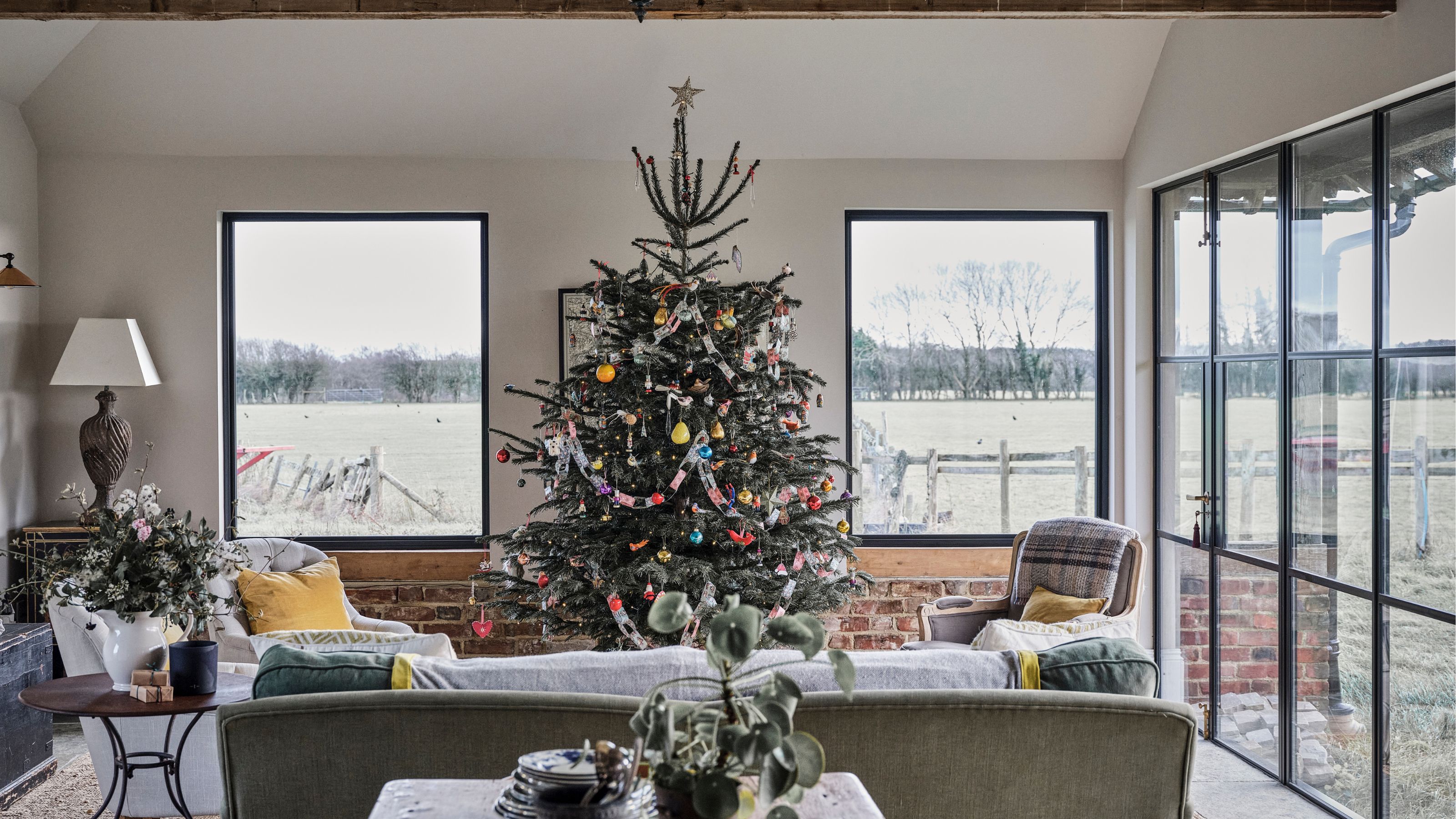

Thinking about buying a real Christmas tree this year? Switching from an artificial tree to a real tree is exciting – but knowing exactly which type to buy, and what to look for when selecting a tree, can be tricky for first-timers.
There are a huge number of benefits to a Christmas tree, and this weekend is the prime time to head out and buy one.
'Real trees have a natural look and authentic scent that cannot be matched, and each one is truly unique,' says Tristan Sissons, head of purchasing at Hillier Garden Centres. 'They also help improve air quality in the home, helping to fight away winter colds!'
Once you've brushed up on real Christmas tree care tips, your tree should stand strong throughout the festive period. But until then, we've put together a complete guide to buying a real Christmas tree to ensure you bring home a healthy tree that's perfectly suited to your space.
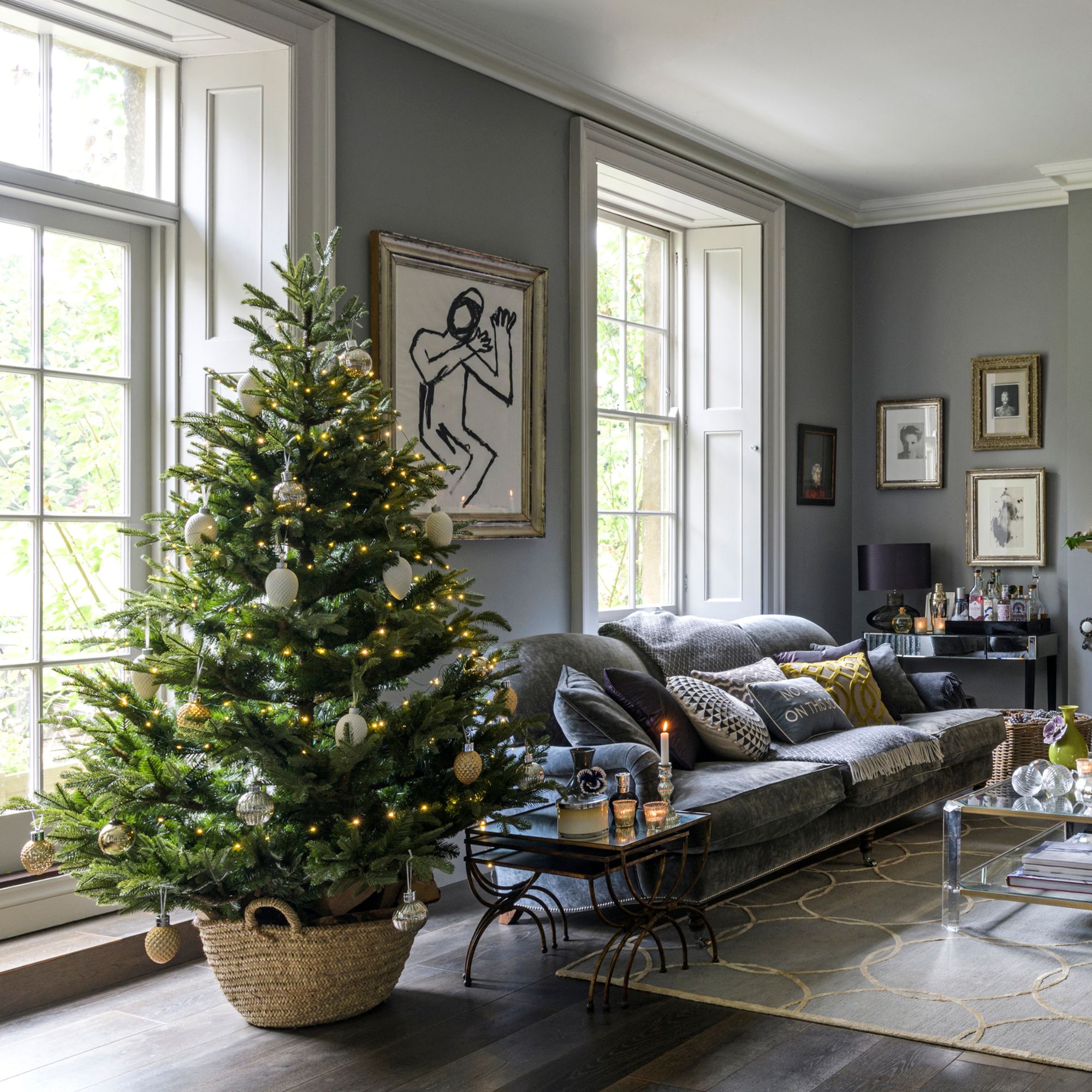
Measuring up
Before you head out to your local garden centre or Christmas tree farm, you'll need to measure up your home to determine which tree size you'll need.
'Be sure to measure key areas such as the diameter of where your tree will be placed, ensuring there is ample space between surrounding furniture, as well as the floor-to-ceiling height,' advises Melissa Denham, interior design expert at Hammonds Fitted Furniture.
Think about leaving room for tree toppers, and consider pots and stands beneath the tree, too. Take these measurements with you, as well as a tape measure to use while you browse for your tree.
'Make sure the area has a plug nearby for your Christmas lights – corners are ideal, as they will keep your tree safe from knocks and bumps,' adds Marcus Eyles, horticultural director at Dobbies Garden Centres.
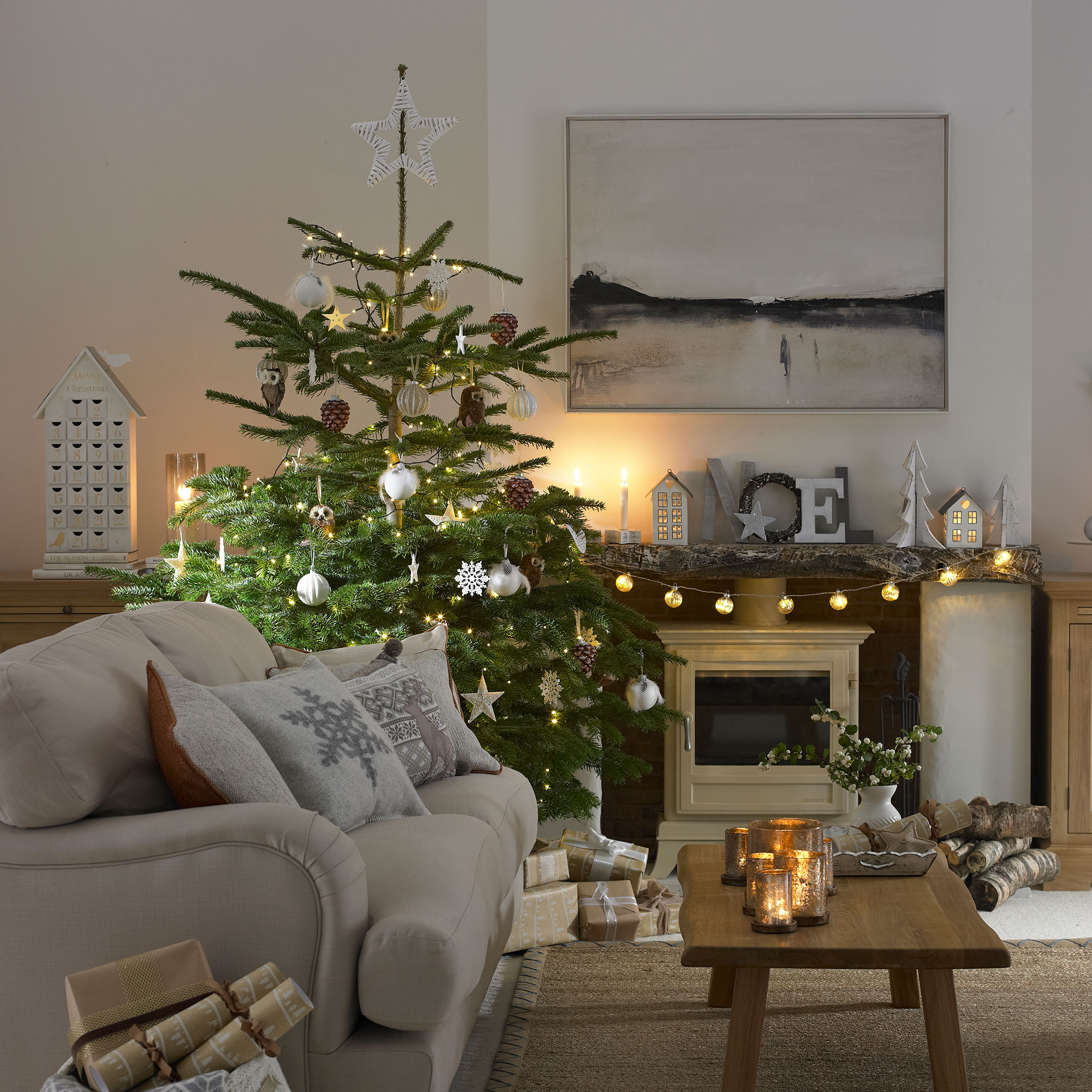
Knowing your real Christmas tree types
So, you've got your tape measure and you've found yourself in the Christmas tree aisle of your local garden centre. What now?
Well, there's a lot of choice to be had when buying a real Christmas tree. Here are the most common types you'll find.

1. Nordmann fir
The Nordmann fir is arguably the UK's most popular Christmas tree – it has a well-balanced ‘A’ shape and strong branches covered with glossy needles which hardly ever shed when properly cared for.
'The Nordmann fir is one of the most popular choices for Christmas trees, perfect for those wanting minimal needle drop,' agrees Josh Novell, garden plants expert and owner of Polhill Garden Centre. 'Its strong branches are perfect for heavy ornaments, and it’s also an excellent option for those with allergies due to its waxy coating, which helps reduce the spread of allergens.'
If you're wondering how long a Christmas tree will last, the Nordmann fir is a sturdy choice which tends to outlive other types.
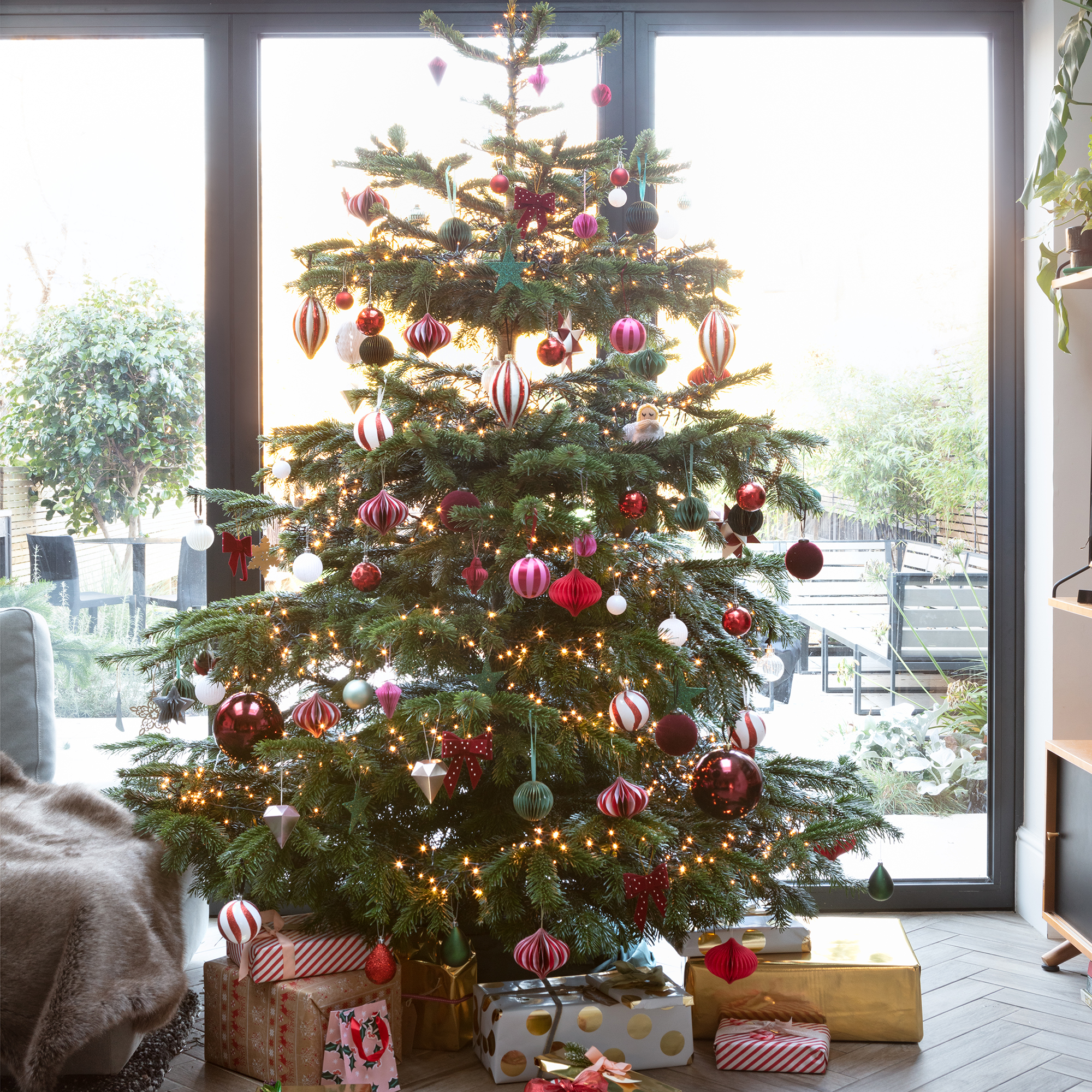
2. Blue spruce
You've probably already heard of the blue spruce, which is another popular option. It gets its name from its beautiful blue and silver tint, caused by the resin it produces to protect its needles.
It's another brilliant one for needle retention, but do bear in mind that, as with all real Christmas trees, you'll need to keep an eye on pets and children, because the needles can be harmful if ingested.
3. Norway spruce
The Norway spruce is another classic choice when buying a real Christmas tree. It's a bushy, classically-shaped tree, packed with short green needles and a lovely pine scent. Despite its name, the Norway spruce is grown throughout Britain.
'The Norway spruce has the most distinctive pine scent which will add a festive fragrance throughout your home,' says Gareth Mitchell, founder of Tree2myDoor.
It's a brilliant option if you're looking for a traditional Christmas tree style. 'Its full shape with plenty of branches makes it ideal for hanging decorations, too,' says Josh.
Josh recommends buying this tree closer to Christmas to ensure its needles last the length of the holidays.
'Keep this tree away from direct heat sources and water it daily to help maintain its freshness throughout the season,' he adds.
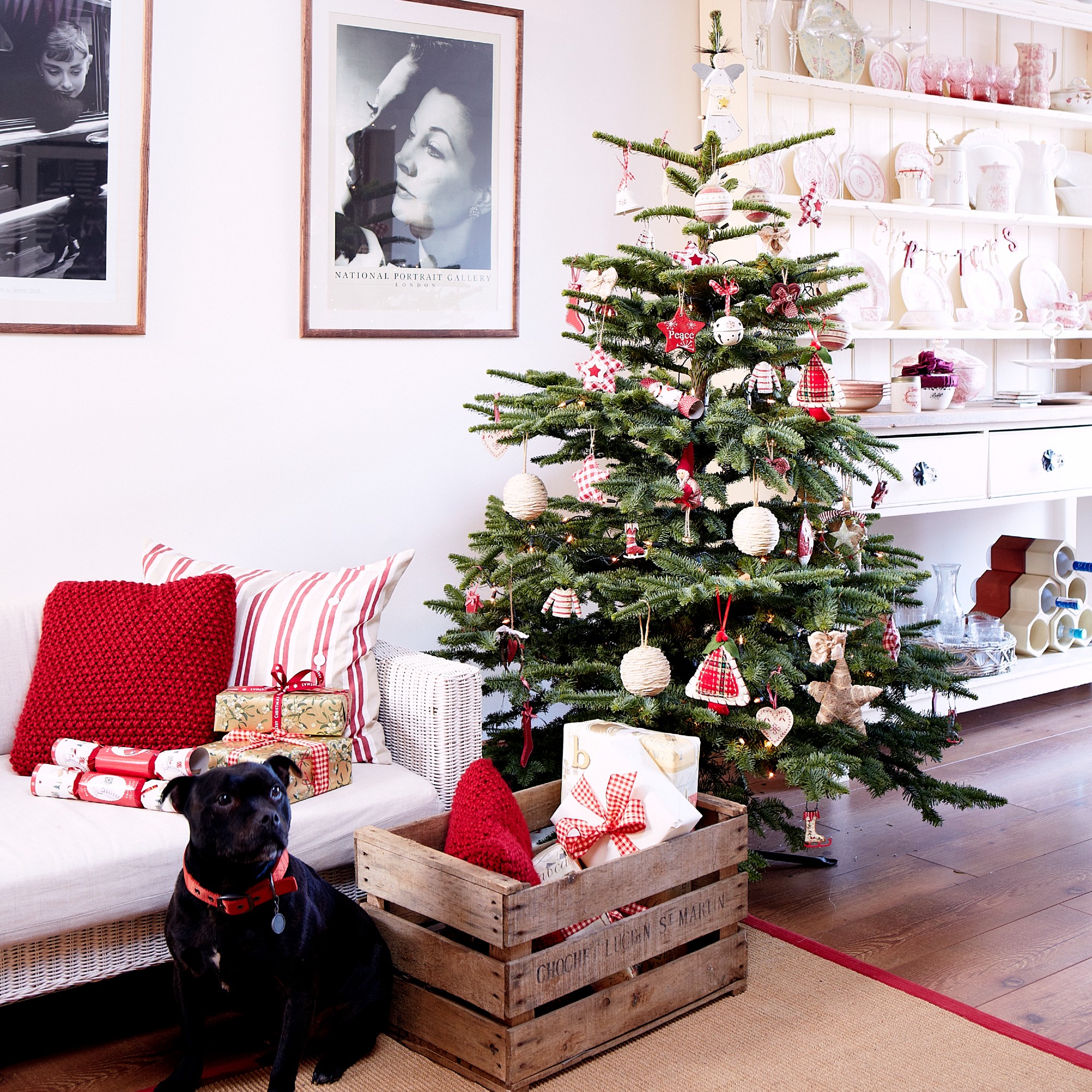
4. Fraser fir
The Fraser fir is another brilliant choice if you're looking for a real Christmas tree this year.
It's known for its tall, slim shape and green needles that don’t drop easily. It's also ideal for smaller spaces, so it's perfect for those small space Christmas decorating ideas.
5. Lodgepole pine
If you have a little extra space to work with when it comes to Christmas living room decor ideas, consider the lodgepole pine tree.
'If you're decorating a large space, the lodgepole pine is a great option, especially for high ceilings,' says Josh. 'This tree’s scent is particularly strong, and in some cases, you might even get the bonus of cones still attached as an additional decoration.'
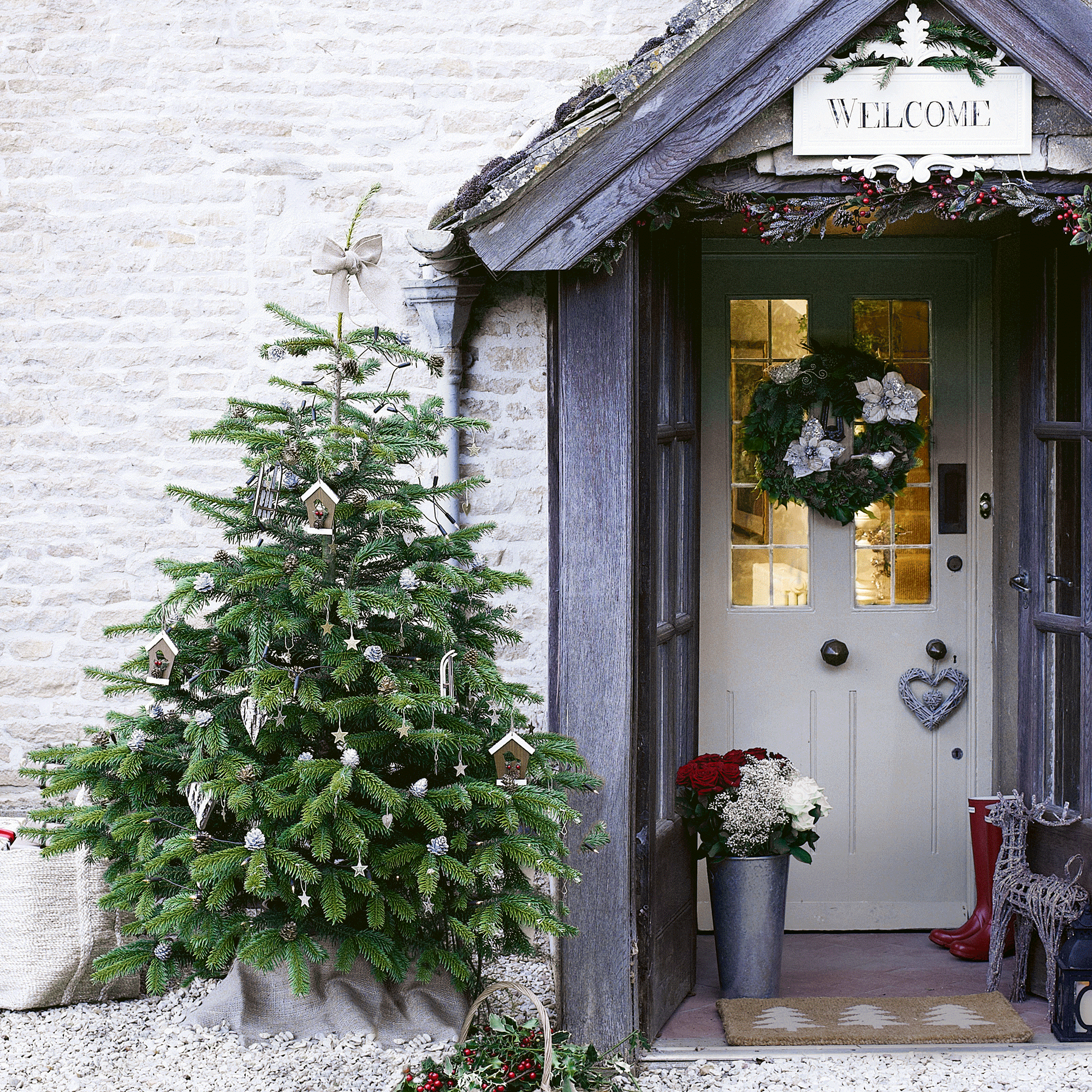
3. What to look for in a real Christmas tree
When buying a real Christmas tree, the key is to choose a healthy one. This will have a huge impact on how long it will last in your home, and how good it will look over the festive period.
‘Picking a healthy tree that’s in good condition for the holidays is really important and will determine how well your tree looks throughout Christmas,' says Chris Bonnet, founder of Gardening Express.
'Checking the colour of the tree alone isn’t really good enough in helping you to determine how fresh it is. Some sellers paint their trees, so it’s definitely worth making some additional checks to test the freshness of the tree.’
Here are a few things you should try and keep in mind when hunting for a healthy Christmas tree.
1. Check the colour and fullness

As Chris already mentioned, the colour of the tree is one indicator of its health.
Ideally, the needles should be a shiny, glossy green (unless, of course, it's a blue spruce). 'Take a good look at the whole tree to check for any grey or brown colouring,' says Chris.
You'll also need to take the fullness of the tree into account.
'The tree should have a good shape and a full appearance,' says Josh from Polhill Garden Centre. 'Avoid trees with bare spots or missing branches.'
2. The drop test
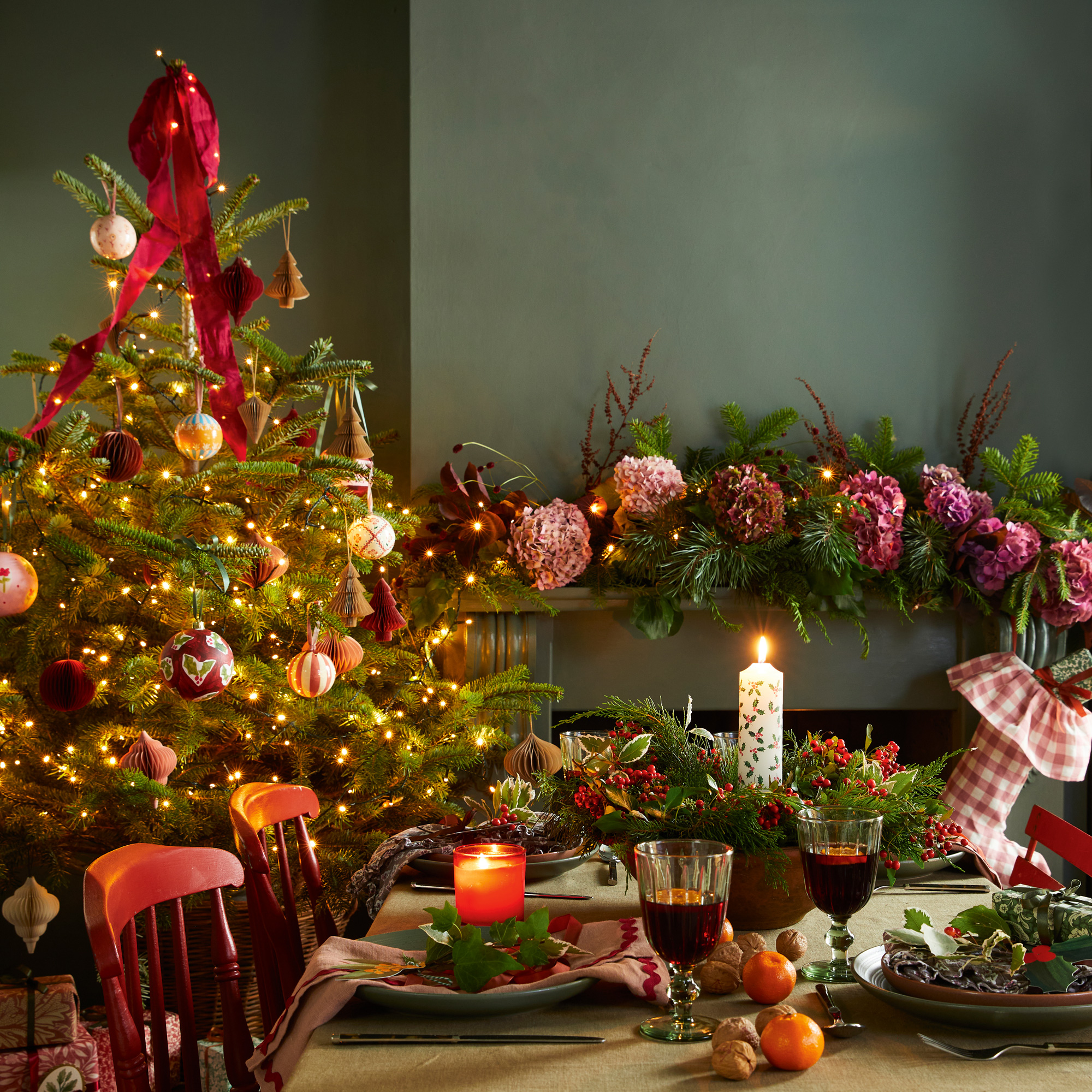
The 'drop test' is a brilliant way to test needle retention, which is another indicator of a fresh tree.
‘Hold the tree a few inches above the ground and drop it,' says Chris. 'If quite a few needles fall off, the tree is not fresh.
'Not all trees are the same, however – the needles on a Norway spruce tend to drop more, so the drop test might not be the best indication of how fresh these trees are.'
There's also a 'pull' method to test the tree's freshness.
'Take a branch and pull it towards you, allowing the branch to pass through your fingers, and check if the needles stay,' explains Josh. 'You should also check for a strong fragrance and bendy branches.'
'It's common for some of the internal needles to fall off, but the exterior ones should remain intact,' adds Chris.
3. Avoid pre-wrapped trees
You'll usually see potted or pre-wrapped Christmas trees in-store, but Josh says we should steer clear of the latter where possible.
'For the freshest option, go for a locally grown tree and avoid pre-wrapped ones, as they may have been cut earlier in the season and lack proper air circulation to retain their needles,' he explains.
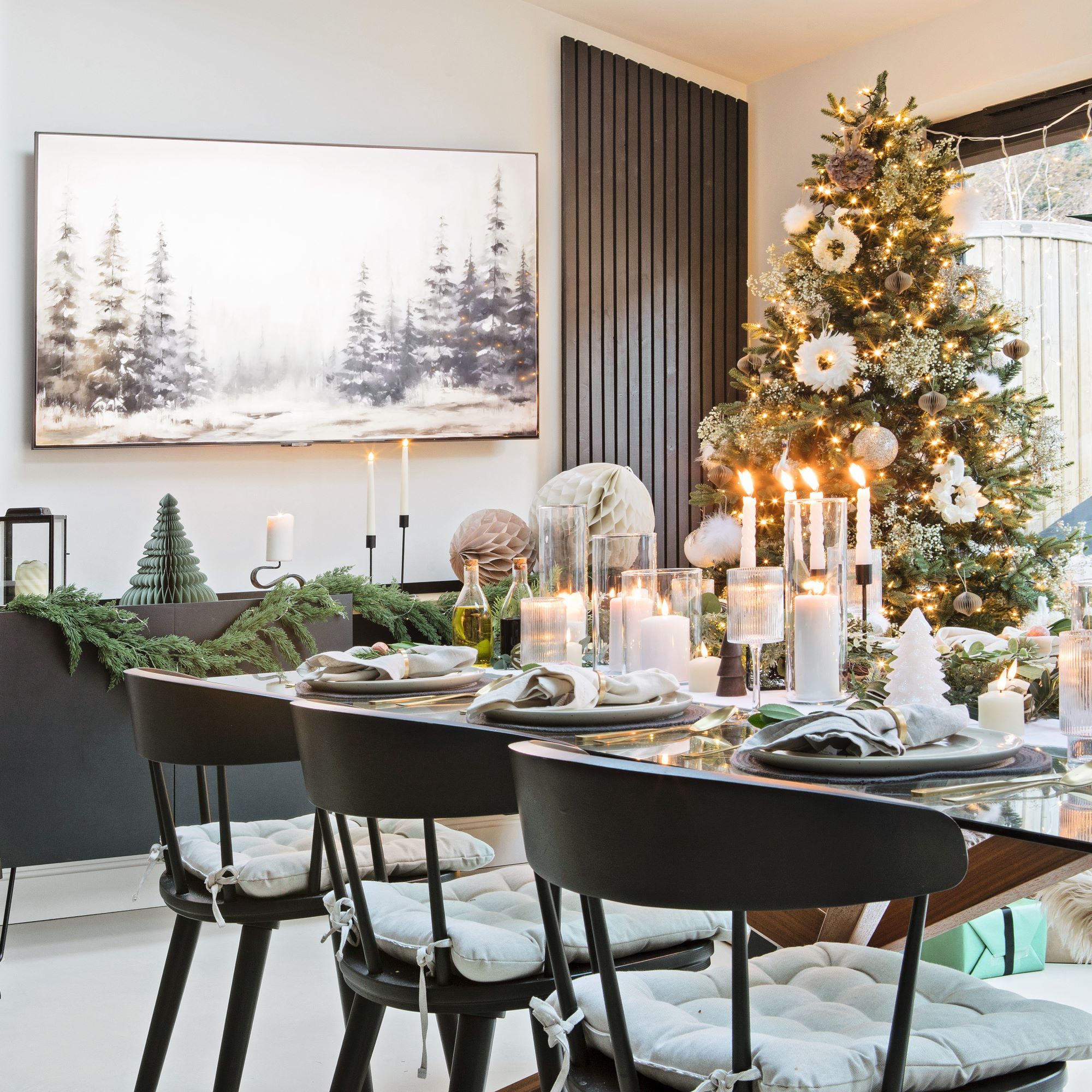
4. Pick a tree in partial shade
A lesser known tip for buying a real Christmas tree is looking at where the tree has been residing in-store.
‘Picking a tree that is already partly in shade means that it won't struggle to adapt when you move it indoors since it’s already been kept away from the sun,’ explains Chris.
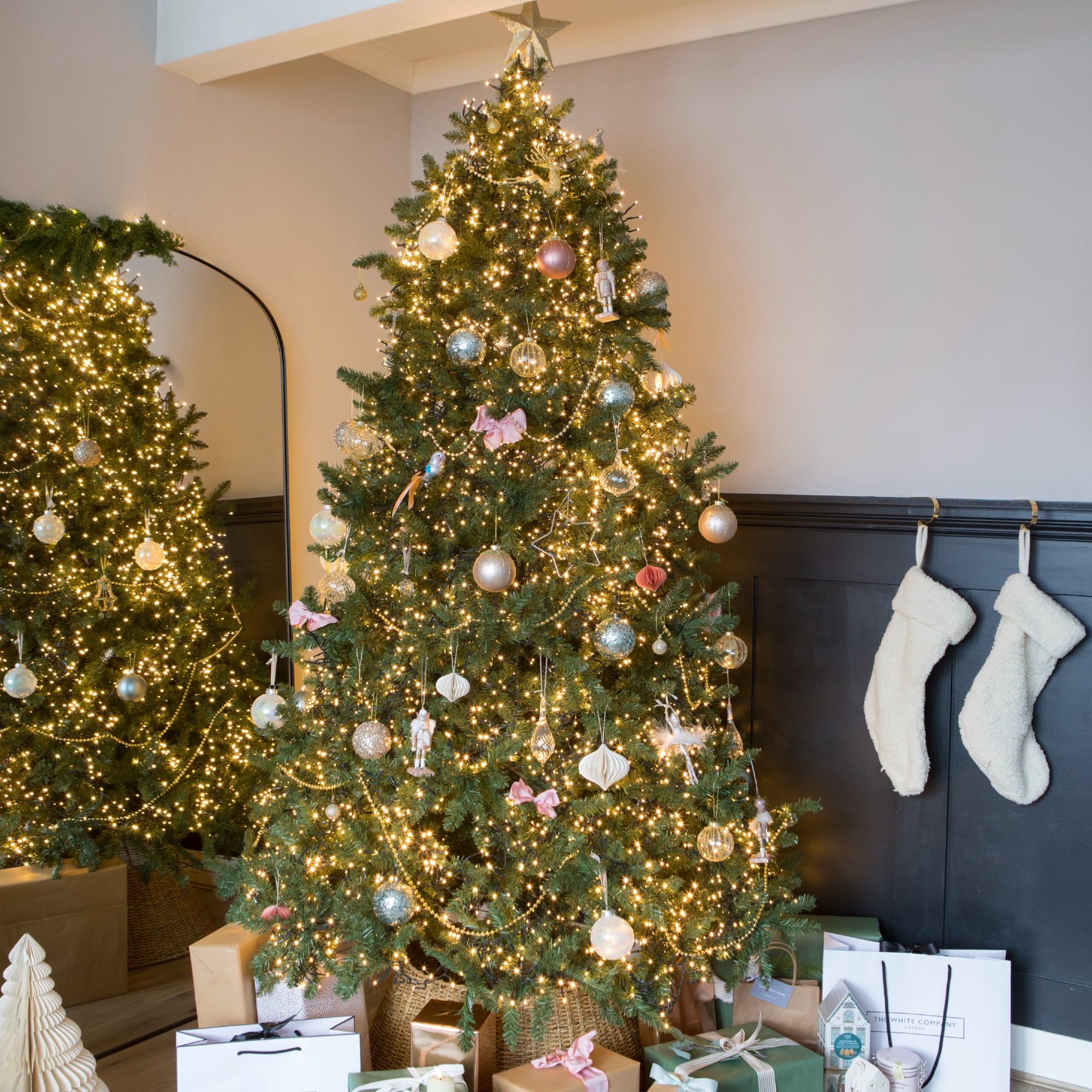
So, there we have it: a rundown of the most popular types of real Christmas tree you'll come across, and the key ways to identify a healthy tree that will last the festive period (with the right care, of course).
Now, you'll need to get out there and buy one before Christmas...
Where to buy a real Christmas tree
If you'd prefer to order a tree, here are the best places to shop for a real Christmas tree online:
- Gardening Express: A freshly-cut Nordmann fir and a huge selection of potted Christmas trees
- B&Q: A fantastic range of real Christmas trees
- Bloom & Wild: A selection of tiny trees for smaller spaces
- Gardeners Dream: Go for the silvery-blue hues of a blue spruce tree
FAQs
What date should you buy a real Christmas tree?
If you're wondering when to buy a real Christmas tree, general guidance suggests any time from the end of November, and preferably the beginning of December.
'Most people tend to purchase on the first weekend of December, but ideally, the second weekend in December will ensure you have a good pick of stock and the tree will last beyond the big day to keep the Christmas spirit alive,' says plant expert Josh Novell.
How much does a real Christmas tree cost?
Buying a real Christmas tree doesn't have to be expensive. The cost usually depends on the size and type of the tree.
'Prices start from just £12 for a real tree (2-3ft), so from the savvy-spruce buyer to those who want to go all out, there's something for everyone,' says Mairi Devlin, plant expert and ‘Head of Christmas’ at B&Q.
Happy Christmas tree hunting!
Get the Ideal Home Newsletter
Sign up to our newsletter for style and decor inspiration, house makeovers, project advice and more.

Sophie joined the Ideal Home team as Gardens Editor in June 2024. After studying English at Royal Holloway, University of London, she began writing for Grow Your Own, which spurred on her love of gardening. She's tried growing almost every vegetable under the sun, and has a soft spot for roses and dinnerplate dahlias.
As Gardens Editor, Sophie's always on the lookout for the latest garden trend. She loves sharing growing hacks for every space, from herbaceous borders to balconies.
-
 Will a conservatory add value to your home and how can you maximise it?
Will a conservatory add value to your home and how can you maximise it?This is what the pros say
By Amy Reeves
-
 I’ve been looking for a new signature scent for my home and The White Company's new fragrance is the exact summer holiday smell I needed
I’ve been looking for a new signature scent for my home and The White Company's new fragrance is the exact summer holiday smell I neededSantorini smells fresh, summery and sophisticated
By Kezia Reynolds
-
 How to remove algae from garden walls in five steps – and the cleaning product experts rave about for tackling it fast
How to remove algae from garden walls in five steps – and the cleaning product experts rave about for tackling it fastExperts share their top tips for getting garden walls algae-free
By Katie Sims
-
 I’m seeing pastel garden furniture at all my favourite brands this spring, but QVC’s sorbet collection impressed me the most
I’m seeing pastel garden furniture at all my favourite brands this spring, but QVC’s sorbet collection impressed me the mostFresh pastel shades are a great way to liven up your outdoor space
By Kezia Reynolds
-
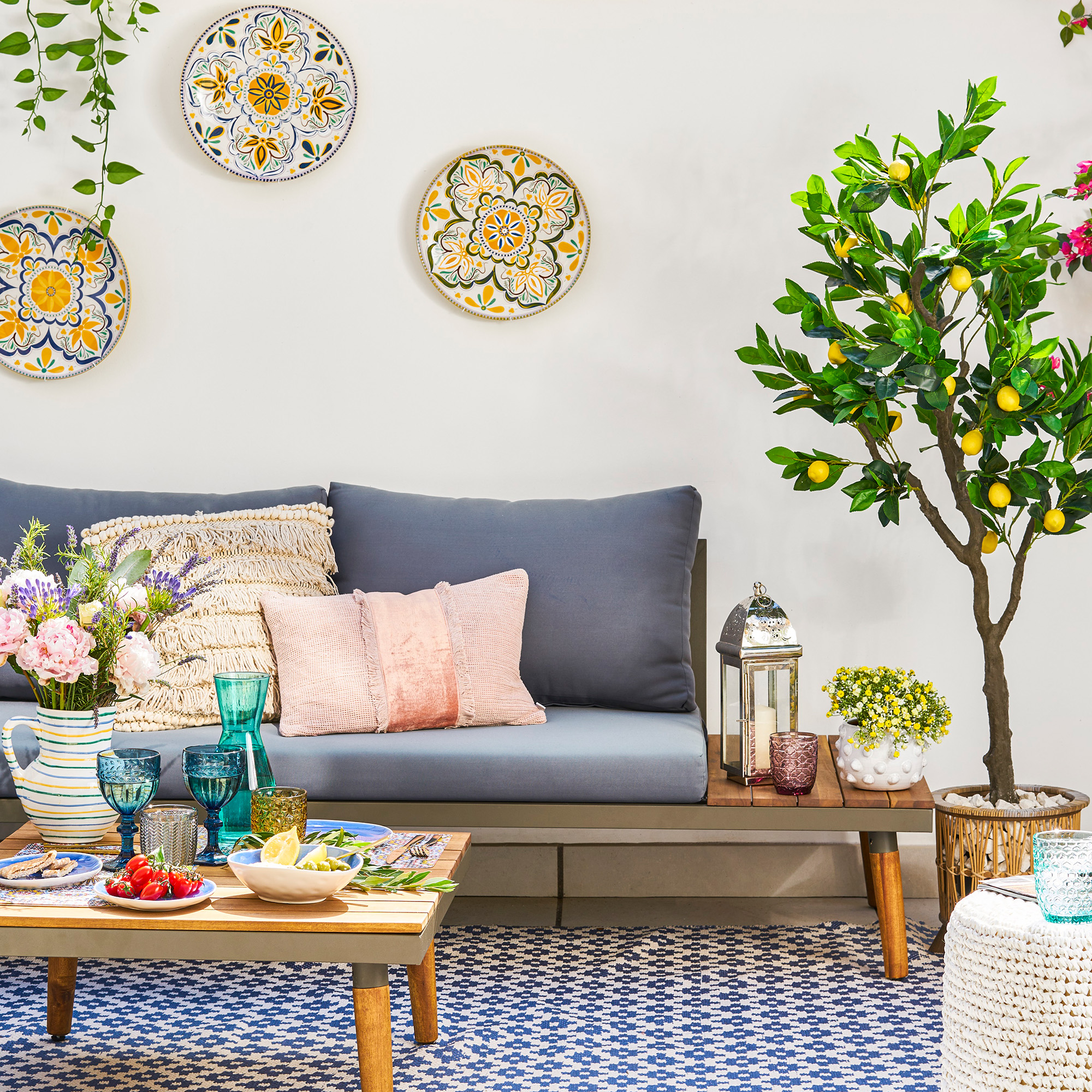 I spent the afternoon looking through Wayfair's garden sale – these are the 6 pieces I'm buying immediately for summer
I spent the afternoon looking through Wayfair's garden sale – these are the 6 pieces I'm buying immediately for summerThese are my must-have garden buys from the sale
By Holly Reaney
-
 I’ve found the perfect alternative to John Lewis’ sold-out striped garden chair – and you won’t believe where it's from
I’ve found the perfect alternative to John Lewis’ sold-out striped garden chair – and you won’t believe where it's fromJohn Lewis' Sling Garden Chair is one of the most stylish pieces of garden furniture I'd seen – until I tracked down this QVC lounge chair...
By Kezia Reynolds
-
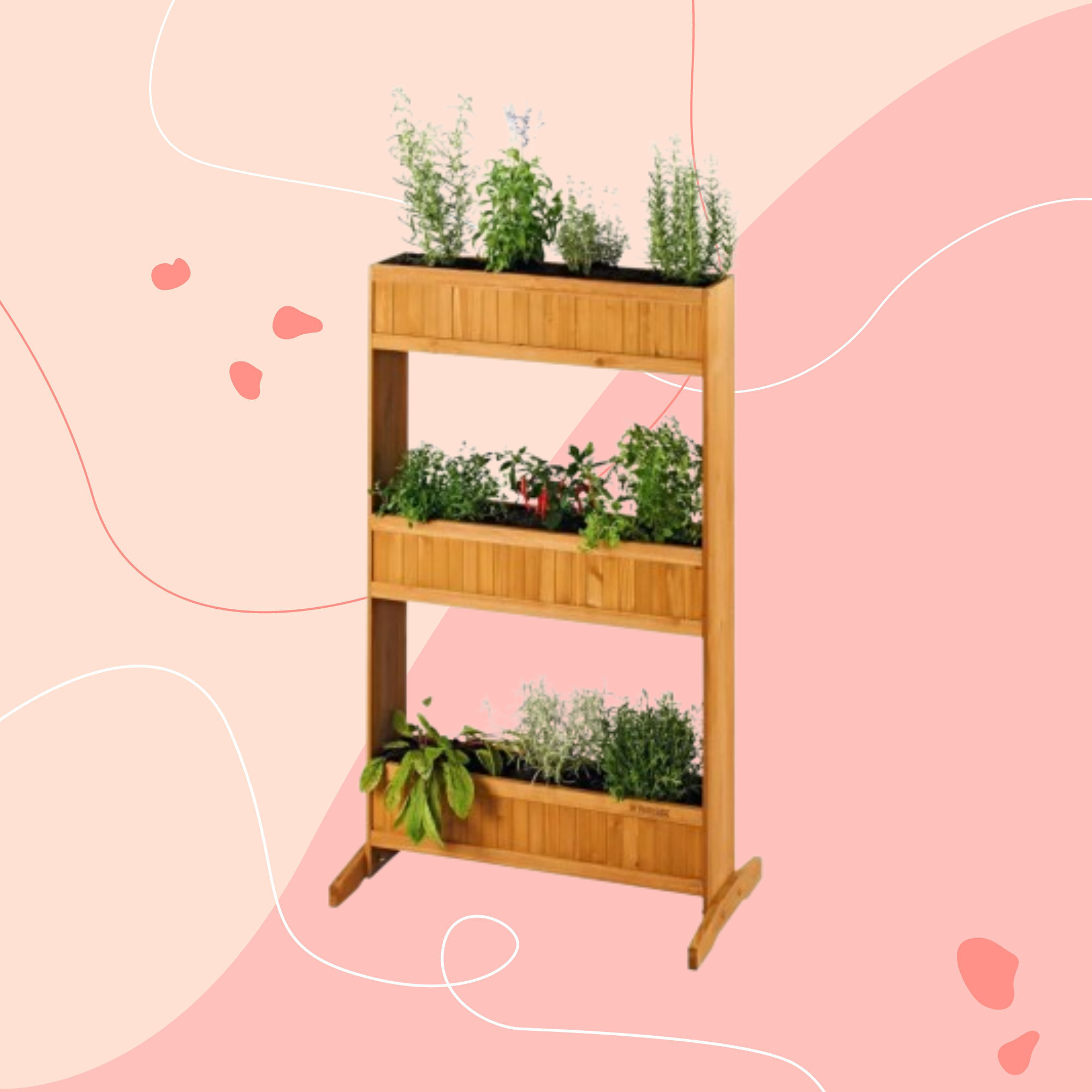 Lidl is selling a smart tiered planter that will unlock extra planting space in a tiny garden or balcony
Lidl is selling a smart tiered planter that will unlock extra planting space in a tiny garden or balconyWhy I've been eyeing this planter up for my tiny garden
By Kezia Reynolds
-
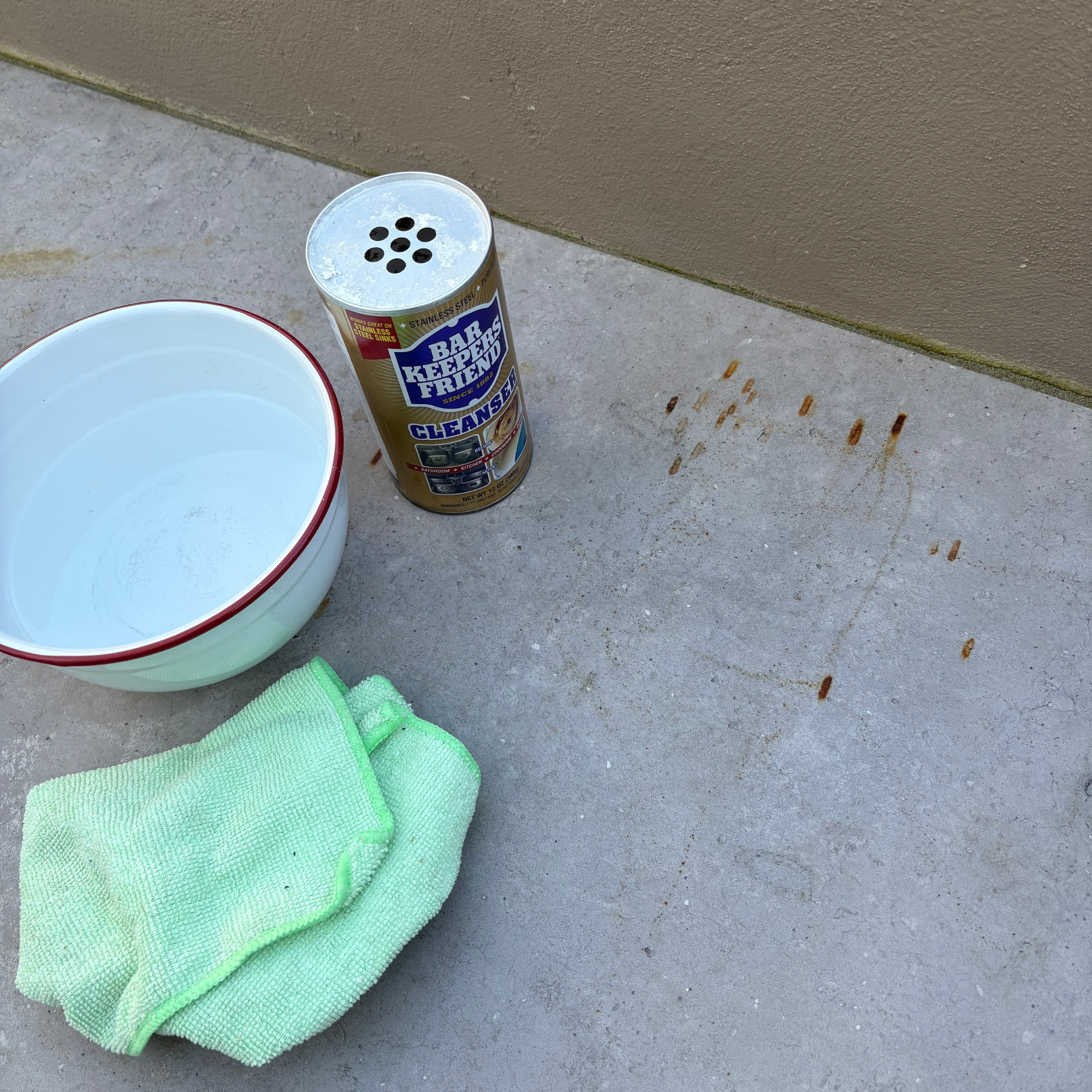 I’ve found the best solution for cleaning stains from a patio - and it’s only £8 on Amazon
I’ve found the best solution for cleaning stains from a patio - and it’s only £8 on AmazonThe stains practically vanish!
By Kezia Reynolds
-
 Lidl’s £15 sun sail is everything you need to create a shady oasis in your garden – and it’s on sale right now
Lidl’s £15 sun sail is everything you need to create a shady oasis in your garden – and it’s on sale right nowWith two stylish colours available, the sun sail will make a chic yet practical addition to any of your garden.
By Kezia Reynolds
-
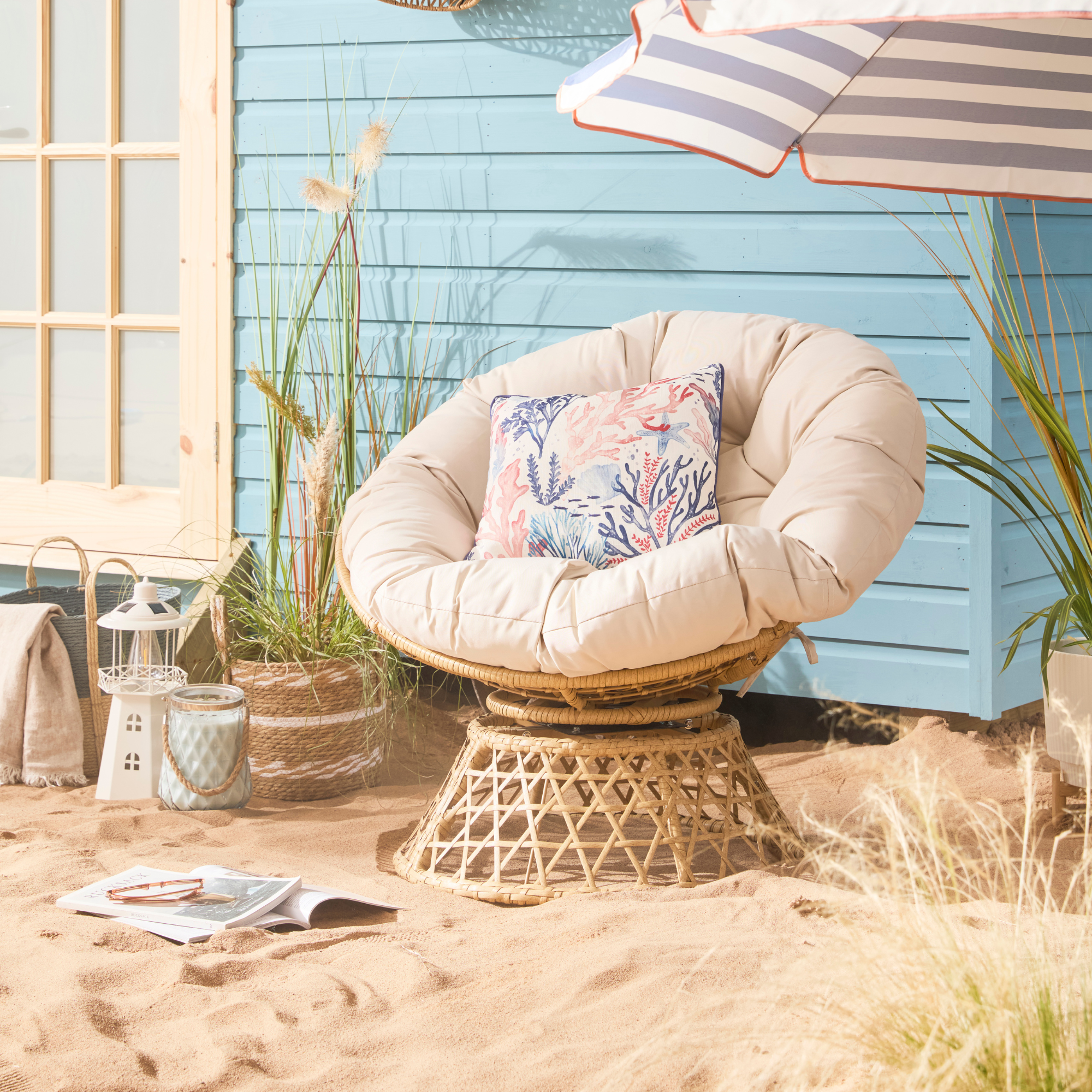 B&M has nailed 2025's breakout garden furniture trend - it's one of the most affordable and stylish I've seen
B&M has nailed 2025's breakout garden furniture trend - it's one of the most affordable and stylish I've seenGet the luxe look for less
By Kezia Reynolds
-
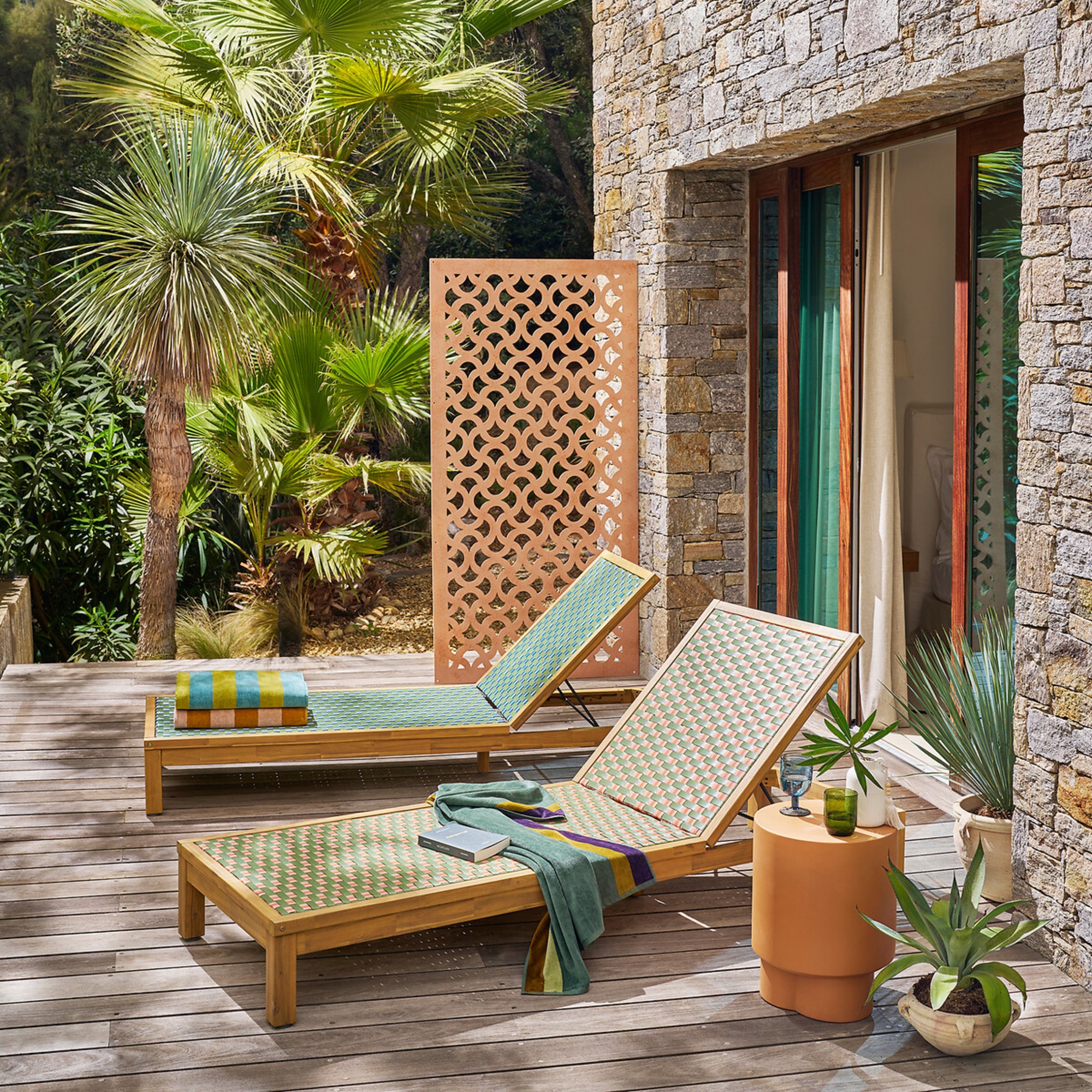 I was shocked to discover a treasure-trove of designer-look garden furniture at La Redoute on sale right now – 6 chic standouts
I was shocked to discover a treasure-trove of designer-look garden furniture at La Redoute on sale right now – 6 chic standoutsGive your garden that high-end look
By Sara Hesikova